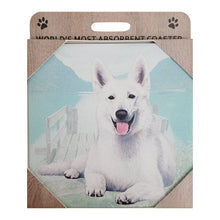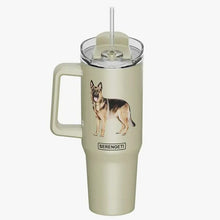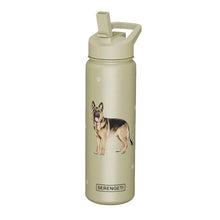7 Things In Your House That Could Be Causing Your German Shepherd’s Allergies

Dog allergies are a common problem for German shepherd owners. Allergies can cause itching, hot spots, ear infections, dermatitis and more. Owners usually blame their dog’s allergies on food; however the true trigger might be lurking inside your house rather than the food bowl.
According to Veterinary Cummings Medical Center at Tufts University, Clinical Nutrition Services, food allergies are not as common as many pet food companies and websites want you to believe. In fact, most itching, skin infections, and ear infections are caused by things found in the environment rather than proteins in food.
If you have an allergy dog, you may want to get them tested for environmental allergies, or try reducing potential allergens in your home, rather than switching to a new food again.
Some common indoor allergens that can cause the itching and other uncomfortable allergy symptoms in German shepherds include:
1. Dust Mites
Dust mites are a common allergen for dogs. According to Dr. Ashley Rossman, DVM, CVA, usually affect the dog’s skin. Dust mites can cause redness, itching, and dermatitis. A study in the American Journal of Veterinary Research suggests that many dogs with atopic dermatitis may have a dust mite allergy.
Dust mites can be found on furniture, pillows, bedding, carpet, rugs, blinds, curtains, and stuffed toys. The best way to get rid of the microscopic pests is to frequently vacuum, wet mop, dust, and machine wash bedding, pillows, and toys weekly.
2. Mold
Mold can also trigger allergies in dogs. The symptoms of a mold reaction can include respiratory problems, nasal discharge, itching, scratching, gastrointestinal problems, and neurological issues.
To ensure you or your pet is not coming in contact with mold, keep areas of high humidity such as the bathroom and laundry room clean and dry as possible. Fix leaky pipes, remove standing water (like the refrigerator pan), and keep your air conditioner and heater serviced and working properly.
3. Indoor Plants
Indoor and flowering plants also have the potential to cause allergies in dogs. Symptoms may occur seasonally. Plants can cause itchy skin, excessive grooming, rashes, sneezing, and eye discharge.
Some indoor plants produce pollen. Some may cause contact dermatitis. Their soil can harbor mold. Because dogs are closer to the ground than humans, they get more exposure to low plants.
4. Smoke
Tobacco smoke contains over 7,000 chemicals and can trigger allergies in dogs. It is also an irritant that can cause respiratory disease, eye problems, nasal and lung cancer, heart disease, and other health problems just as it does in people.
There is no ‘risk free’ level of second hand smoke. The symptoms of smoke allergies in dogs include atopic dermatitis, itchy skin, asthma, shortness of breath, watery eyes, sneezing, and difficulty breathing.
5. Household Cleaners
Dogs are constantly in contact with the floor and other surfaces in the home that are routinely cleaned with chemicals. Their paws are like sponges that collect whatever chemical they are exposed to as they walk along throughout the day and then they lick it off.
Washing machine detergent, dryer sheets, and fabric treatments (such as Febreze), carpet shampoo, soaps, detergents, hairspray residue, and even chlorine from the swimming pool can be a trigger for sensitive dogs.
Red itchy paws, contact dermatitis, rashes, scratching, ear infections and more can be a result of household chemicals. If you have an allergic pet, try all natural, organic, fragrance free products to see if it offers your pet some relief.
6. Dog Bed
As bizarre as is sounds, your dog’s bed may be contributing to the allergies. The stuffing and fabric in some beds are treated with chemicals. Dog beds are also a dust mite paradise. Beds made with feathers or wool can also be a trigger.
If you think your dog’s bed could be the problem, try washing it every week in hot water to see if that helps. If not, replace it with a 100% cotton or hypoallergenic bed.
7. Other Pets
Just like people, dogs can develop allergies to other pets in the house. According to Dr. Arndt, dogs can also be allergic to the dander of another animal. A new pet in the house could be a trigger as well as a sudden sensitization to an existing pet.
Thankfully allergies to other pets are extremely rare so it’s more probable that your dog’s allergy is caused by a household cleaner or dust mite rather than the new kitty.
How you can help
We hope this helps you get to the bottom of your dog’s allergy. According to veterinarians, one reason dog’s have environmental allergies is due to an abnormal skin barrier that allows allergens and other irritants to absorbs through the other skin barrier, where the immune system lives.
By keeping their skin as healthy as possible through diet and supplements, talking to your vet, and removing as many allergens from their environment as possible, you can help reduce your dog’s itching.
Please share with your family and friends.
























